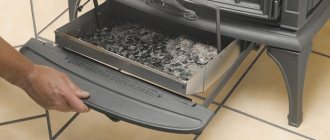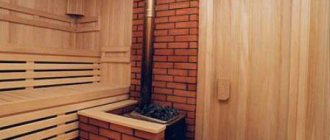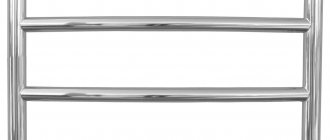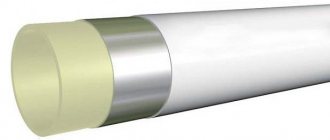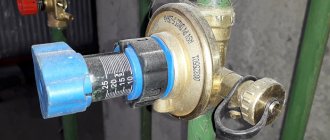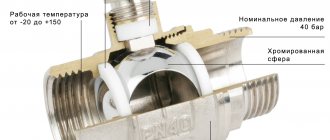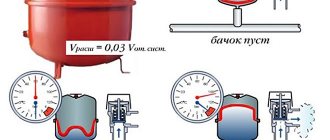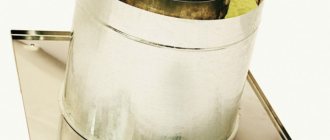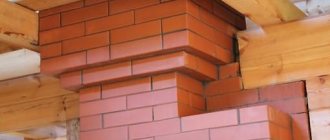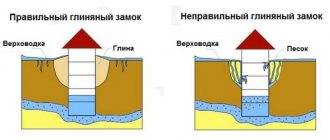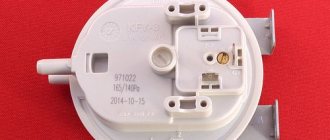Chimney damper
One of the main conditions for the efficiency of a heating system is the quality of draft. To regulate air flows, a damper is used - a simple-shaped metal valve mounted in the smoke exhaust duct. The damper is considered a mandatory element of the chimney and is sold along with it, but for homemade stoves the damper can be purchased separately. In addition, it is not difficult to make and install a gate valve on your own if you familiarize yourself with the technology in detail.
What is a gate
A ventilation damper is a small device that acts as a chimney duct valve.
Rectangular gate
The equipment is a metal sheet that moves depending on the size of the air duct:
- in a specially equipped slot channel. Gates in the shell are used for small-diameter ventilation ducts;
- on metal corners that serve as guides (for large diameter chimneys).
For the manufacture of ventilation equipment the following are used:
- stainless steel;
- alloy steel;
- chrome steel;
- cast iron.
The cast iron rectangular gate is heavy, which makes its installation difficult. Experts recommend using equipment made of steel.
Cast iron gate with valve
Installing a chimney damper
To move the metal plate the following can be used:
- handle (mechanical valve);
- electric drive;
- pneumatic drive.
The main function of the deadbolt is to restrict the air flow passing through the ventilation shaft. As a result you can get:
- independent adjustment of air duct draft force to achieve maximum fuel economy;
- retaining heat after the end of the fire.
How is traction adjusted?
The damper plate follows the cross-section of the chimney and, when closed, almost completely blocks the chimney. A small hole in the valve does not allow the pipe to be hermetically sealed, which meets fire safety requirements. By changing the position of the damper, you increase the air flow, and, accordingly, the flame in the furnace burns hotter. Reduce the gap - the draft decreases, the fire burns weaker. When the flame in the firebox dies out, the damper is closed to retain heat. If you don't do this, the oven cools down much faster.
The latest modifications of stoves are equipped with deflectors that automatically regulate draft. All other heating devices require the installation of gate valves.
Gate prices
How to properly regulate traction
Correct draft adjustment is a very important aspect of the operation of heating equipment, since this process and its control affect the efficiency of the heating equipment, and in some cases can even save health.
The fact is that the damper, even when completely closed, is unable to ensure total non-penetration of carbon monoxide into the room. Closing the damper should be carried out at the very end of the firebox, when the firewood has already burned out and become covered with ash . Otherwise, there is a significant risk of suffocation from carbon monoxide if you spend a long time in a room where carbon monoxide leaks. It seeps through and fills the entire room and it is completely impossible to see, so in order to avoid such a terrible situation, you should control the cravings.
In order to control the draft for the most efficient operation of heating equipment, there is a special formula that can be used to calculate the ideal value for the damper. This alpha value is 2.0–2.5 . If you set this value, you can ensure good combustion of wood and minimal ash formation.
Types of gate
Retractable
The retractable type gate is considered the most convenient and reliable to use. This is a smooth plate with a small longitudinal hole that moves along grooves in the chimney. It is mounted in a horizontal position, the traction force is regulated by the movement of the plate, which reduces or increases the cross-section of the pipe. This type of valve is intended for brick stoves, although it can also be used in chimneys made of steel pipes.
Prices for retractable gate
Rotary (throttle)
Rotary gate. The plate that regulates traction is visible
The rotary gate is a metal plate with a guide welded in the center. It is installed inside the chimney, with the end of the guide necessarily leading out. The traction is adjusted by rotating the plate around its axis. This design is less reliable, since over time the welding fastening weakens and the damper comes off. The rotary damper is used in steel chimneys.
The material from which the valves are made is no less important.
Cast iron
Cast iron is a very strong and durable material, traditionally used for the manufacture of furnace valves. A cast iron gate has only one drawback - it is heavy.
Cast iron damper for sauna stoves, fireplaces
Stainless steel
High quality steel gate unit
Stainless steel is not afraid of corrosion, lasts a long time, weighs little and does not reduce the efficiency of the furnace. The smooth polished surface of the stainless steel valve prevents the accumulation of soot, making cleaning easier. Such dampers can be of any design and can be installed in both brick and steel chimneys.
Steel gate in a brick kiln
Classification of gates
Round and square valve design
Classification of valves for ventilation can be carried out on several grounds. They differ in shape, design, installation method on the chimney, and methods of operation control.
By shape
The cross-section of the air duct can be in the shape of a circle or a rectangle. Accordingly, the part to be installed is selected. According to statistics, a damper for a round air duct is used very rarely. It can only be mounted on a tube of the appropriate shape. Rectangular dampers for ventilation are more common.
There are situations when a round ventilation damper cannot be installed; only installation of rectangular parts is permissible. This includes systems with electric heaters, as well as cases where the valve needs to be hidden and there is not enough free space.
By design
Rotary valve - this model often breaks down and requires repair.
The most popular and reliable designs are retractable ones. They are widely used in tin and brick chimneys. This type of device provides:
- passage of air masses with a minimum of losses;
- greatest tightness;
- simplicity of the chimney cleaning procedure.
There are rotating models. They are not highly reliable - the moving component of the mechanism easily fails. They are used when design or technical features do not allow the installation of a retractable product. There is a twig in the middle of the device. A sheet of metal is attached to it, rotating around its axis.
By type of control
In addition to traditional manual products, there are automatic gate valves, as well as devices with hydraulic and pneumatic control. A motorized damper for ventilation opens and closes by pressing a key (usually remote control).
According to the material of manufacture
Chimney dampers are made from different types of steel sheets. The material can be chrome plated, alloyed or with anti-corrosion coating. Parts intended for installations that do not involve high temperatures can also be made from other materials, for example, plastics.
Making a gate valve with your own hands
Both a retractable and a rotary gate can be made independently if you have a welding machine and a grinder. Assembling both structures is not difficult, the main thing here is the accuracy of the measurements. If the valve fits too tightly into the pipe, it may jam when exposed to high temperatures. If you leave a large gap between the plate and the pipe, this will make it difficult to adjust the draft.
Manufacturing of a retractable gate
The design of the gate consists of the valve itself and the guide frame. First you need to measure the internal cross-section of the pipe or brick chimney. According to measurements, a rectangular valve is cut out of sheet steel 4-5 mm thick. On one side, a longitudinal fold 20-30 mm wide is made to make it easier to pull out the flap. All cuts are carefully polished, simultaneously reducing the size of the product by 1-2 mm on each side. This will ensure free movement of the damper inside the chimney.
If the damper is installed in a brick chimney, the frame can be made of thick steel wire, for example, with a diameter of 6 mm. To do this, the wire is simply bent in a U shape to fit the hole.
If the chimney is steel and has a rectangular shape, the frame is made of a steel strip 2 mm thick and 30-35 mm wide. The strip is bent lengthwise, leaving a gap along the thickness of the plate, then cut in two places at an angle of 45 degrees and given a U-shape. The gaps in the places of the cuts are butt welded. The ends of the homemade profile are connected with two pieces of metal, positioned so that the valve blade passes freely between them. You should get a rectangular frame with grooves for the gate. In this case, the internal perimeter of the frame must be equal to the cross-section of the chimney.
Manufacturing of gate valves
Ready-made damper design for a round chimney
For a round chimney, the damper is made a little differently: take 2 identical metal sheets 2 mm thick, cut round holes in the center according to the diameter of the pipe, and cut out the valve plate separately.
Now the sheets need to be connected by welding on three sides around the perimeter so that the holes for the pipe coincide, and there is a gap of 4-5 mm between the top and bottom sheets. After this, all that remains is to insert the valve and secure the gate to the pipe.
How to make a chimney damper with your own hands
It is better to make and install a damper yourself during the process of laying a fireplace or installing a metal chimney.
You can also make and install it if a steel chimney is already installed, but a damper was not provided in it. Depending on the diameter and cross-sectional shape of the chimney, the material used, a retractable damper and a butterfly valve can be made.
Note! For a brick chimney, a retractable rectangular damper on a special groove is better suited. For a metal pipe, you can choose any option.
Instructions for making a retractable gate
To make a simple retractable damper, sheets of galvanized or stainless steel with a thickness of 2-2.5 mm are required. Making guides around the perimeter of the chimney will require 6 mm thick wire.
We recommend that you read: How to make a brush for cleaning a chimney with your own hands?
To complete the work you need equipment and tools:
- grinder or metal scissors;
- grinding disc for angle grinders;
- drills and files for metal;
- marker for marking.
It is advisable to do all the work on a special lathe or typesetting machine. If the shape of the chimney is rectangular, you can make the simplest gate damper by simply cutting a piece of sheet steel of the required size. It is recommended to weld the handle or drill a small hole for ease of adjustment of the gate.
Before starting work, we measure the area and cross-sectional shape of the chimney, and use a marker to make marks on a sheet of cardboard in accordance with them. To make the frame, we bend the wire in the shape of the letter P, the width and length coinciding with the cross-section of the chimney. Using a grinder, we cut out the flap using a cardboard template, and sand the edges with a sanding disc.
Important! The width of the wire frame should be 2-3 mm larger than the gate plate so that the damper moves freely and does not get stuck due to thermal expansion of the metal.
Instructions for making a throttle valve
Making a butterfly valve requires more tools and time. Most often this type of damper is used for metal chimneys for modern fireplaces and metal freestanding stoves.
Set of tools for work:
- Bulgarian;
- drill;
- pliers;
- welding machine;
- compass;
- roulette;
- marker for marking.
To make a gate, you need sheet steel up to 3 mm thick, a stainless steel pipe with an internal diameter of 6 mm, fasteners (bolts, nuts) 8 mm, and a metal rod.
- First, measure the internal diameter of the chimney pipe using a compass.
- According to it, draw a circle on sheet steel.
- Use a grinder to cut out a circle.
- Place the cut fragment into the pipe and check the tightness of the fit. If necessary, rework the valve with a grinding disc.
- Place a metal tube with a diameter of 6 cm on the circle in the center and make marks on it, retreating 3 mm from each side of the circle.
- Cut off the tube with a grinder.
- In the resulting pipe section, drill the threads to 6.8 mm on both sides.
- Drill holes in the steel circle for welding (one in the center, two 1 cm from the edge on opposite sides).
- Weld the threaded tube to the steel circle.
We recommend that you read: Options and recommendations for the manufacture of products from profile pipes
The slide valve is ready, all that remains is to install it in the chimney pipe.
What is it and what is it for?
Damper (from the German Schieber - damper) is a device for completely or partially blocking the movement of gases in the chimney. It has been used since the appearance of the first Russian stoves. Made from cast iron or steel. In modern engineering it has found application both in smoke exhaust structures and in ventilation systems.
- Regulating draft and maintaining heat in the room.
The chimney is closed after use to prevent warm air from being drawn from the room into the chimney. Using a damper, you can reduce or increase the working cross-section of the chimney.
The valve can be used to regulate the intensity of oxygen flow to the flame, and accordingly increase or decrease the efficiency of the heater.
This statement is true only for furnaces and boilers without blowers and forced air supply devices.
What is a gate valve
A damper for ventilation is a special valve, the main task of which is to completely or partially block air flows or bulk and liquid materials. Parts of this kind, in addition to ventilation systems, are also widely used in various drainage systems, wastewater channels, etc.
There are two main types of the described mechanism: horizontal and rotary gate. The second is also sometimes referred to as the "throttle valve". Unlike a horizontal type mechanism, it is quite unreliable, so its use is resorted to only in cases where installing a horizontal gate is impossible for technical reasons.
The duct damper is most often used in chimneys made of brick or steel. To ensure complete closure of the channel, it has a perforated shape. These requirements must be met in order to comply with fire safety requirements. It is also worth noting that there are automatic duct dampers with electric drive. The process of closing and opening such a mechanism is carried out remotely by pressing one button.
How the gate works
Structurally, the gate is a locking device with an adjustable valve. It is thanks to the displacement of the valve that the movement of gases in the chimney is regulated. Can be installed in chimneys of round, square and rectangular cross-section. It is a metal plate that moves inside the smoke channel in a certain way.
Gate valves can be of two types:
- Retractable. Moves in one plane back and forth.
- Rotary. Regulates air access by rotating around its axis.
In addition, valves can be manual or equipped with an electric drive. The cost of the latter is an order of magnitude higher and they are not used in chimneys.
Types of valves for pipes
They come in two types: retractable and rotary. Based on the name, it becomes clear that their difference is the principle of operation. The first operates due to perpendicular movements of the partition relative to the chimney lumen. To increase traction, it moves back and completely leaves its boundaries, and to reduce the flow it will need to be pushed back. The second involves a rotating mechanism located inside the pipe.
Retractable
This type is considered a comfortable and effective method of traction control. Its main difference is its long service life, which is achieved due to the absence of temporary wear in the axial fastening areas. Due to this, it is possible to maintain the high quality and safety of the gate, even under unfavorable environmental conditions. But it is often possible to find ready-made additional structures for a metal skylight with an oval or rectangular hole.
Retractable type is also divided into:
- Simple - has the form of a rectangular groove mounted inside the passage. It contains a special plate responsible for opening the chimney.
- The unit is a ready-made unit, created as a retractable plate into which a pipe section is built. Its advantage is the ease of insertion, which significantly speeds up installation.
Rotary damper for chimney
The principle of its operation is based on the rotation of the partition around its axis. When turned counterclockwise at a right angle, the damper closes the air flow. If the turn is carried out in the opposite direction, then no obstacles are created in the path of the air. To regulate this process, you need to operate a special handle.
Types and designs
The chimney damper is available in several versions.
Retractable
It is a round or rectangular frame with a plate. The plate extends and retracts, thereby adjusting the cross-section of the chimney.
This option is most often used with brick and ceramic channels. To ensure incomplete sealing and avoid carbon monoxide poisoning, a small hole is made in the plate. The main advantage of this option is ease of installation.
Rotary throttle
A rotary or throttle valve (also known as a hog valve) is a plate made of steel or cast iron that rotates around an axis. The axis is a metal rod welded inside the chimney. Used in steel chimneys.
It is less reliable - over time, the welding fastening of the plate and axle weakens. You should avoid installing a rotary damper in the bathhouse - even when closed, this type of damper partially allows steam to pass through.
In addition, gate valves differ in material (the most common are stainless steel and cast iron) and the method of adjustment.
Differences between retractable and rotary gates
The retractable damper allows you to adjust the working cross-section of the chimney, while the rotary damper only allows you to open or close the pipe. Of course, some tricks are possible - such as securing the hog in an intermediate position in different ways, but the factory equipment does not provide for this. In addition, the rotary gate complicates mechanical cleaning of the pipe.
The hog is often installed in metal chimneys, and the retractable one is installed in brick chimneys.
Types of gate valves
There are two main types of gate valves - sliding and rotary (throttle). The design features are clear from the name: the first type works due to the perpendicular movement of the metal plate relative to the chimney pipe.
We recommend that you read: How to repair hot water pipes using cold welding
To increase draft, the damper is moved back and almost completely extends beyond the chimney, and to reduce the flow it is pushed back into the pipe.
Throttle gate
The throttle valve is always located inside. Its operation is based on the rotation of the valve around its axis. Turned 90 degrees counterclockwise, it blocks the air flow, and when turned clockwise, the damper practically does not impede the air movement. To adjust the position of the valve there is a handle on the outside of the pipe.
Retractable gate
The retractable valve shows itself to be the most convenient and effective way to regulate draft. In contrast, the throttle valve becomes loose over time at the axial mounting points and deteriorates the quality of traction control.
Most often, a retractable damper can be seen in brick chimneys, although ready-made additional products for metal chimneys of round and rectangular cross-section are also sold.
The retractable damper can be of two types:
- Simple - it is a rectangular groove that is installed inside the chimney pipe. Inside the groove there is a plate that moves back and opens the chimney.
- Nodal - a finished product in the form of a groove in a retractable plate into which a piece of pipe is built. This design is easier to embed into the chimney.
Classification by material type
Gate valves also differ according to the type of material from which the valve is made:
- Cast iron - known for its strength and durability, but due to its heavy weight it increases the load on the pipe. Typically used in brick chimneys.
- Steel - a product made of stainless or galvanized steel - a universal option for installation in stoves and fireplaces, brick and metal chimneys.
Make it yourself or order it
The choice between a homemade or a ready-made damper should be based on the type of chimney and the degree of its readiness. So, you can install a self-made retractable structure into a ceramic or brick channel.
If we are talking about a stainless chimney that is in the process of assembly, in this case it is better to choose a finished product. The damper is usually included in the chimney system and is mounted using pipe-to-pipe technology, which I will talk about later.
In addition, it is not always possible in the store to select a product specifically for your chimney shape.
Making and installing a gate valve with your own hands
Required materials and tools
To independently manufacture and install any type of stainless steel gate, we will need the following tools:
- Bulgarian;
- Abrasive wheels - cutting and grinding;
- Drill;
- Tap and thread lubricant;
- Hammer;
- Pliers;
- Vise;
- Welding and electrodes;
- Kern;
- Roulette;
- Compass;
- Marker.
- Stainless steel sheet (preferably domestic brand 12×18n10t, or imported AISI304, they are more expensive, but last an order of magnitude longer).
- Stainless steel tube 6mm;
- Bolts 8mm -2 pcs;
- Metal rod for the frame.
Drawing and diagrams
Before manufacturing, it is necessary to draw a drawing or diagram of the future valve.
I will give some example diagrams below:
Size calculation
You need to take measurements very carefully; a gap of even a few millimeters can cause the chimney to malfunction.
- Using a tape measure, measure the dimensions of the internal section of the channel;
- Add 20-30 mm to the obtained result - you get the outer size of the frame;
- Do not forget to make an opening in the finished valve to release gas;
- The position of the welding holes should be accurately marked.
We summarize the dimensions for the rotary gate in the table:
Installation features
- When installing the gate at the stage of laying brickwork, the frame is placed at a height of 6-8 rows from the base of the pipe;
- The frame should stand straight, without blocking the outline of the chimney;
- In stainless steel chimneys, the valve is installed using the “pipe-to-pipe” technology. It is necessary to coordinate its dimensions with the diameter of the channel;
- An important nuance - the damper is installed on an uninsulated section of the chimney;
- The height from the firebox to the damper should not exceed 1 m (for metal channels);
- Pipe height from the floor to the valve - 1.8 - maximum 2 m (for brick);
- The damper in the grooves should move freely;
Frequent errors and problems during installation
- Installation of a valve in an insulated area. Under the influence of thermal expansion, the damper may jam;
- Installation of a cast iron part in a metal chimney (cast iron weighs a lot);
- Using too thin steel or stainless steel with a low nickel content for the manufacture of valves. Such a product quickly deforms under the influence of hot gases and can burn out;
- Installation of a gate with a non-smooth surface;
- Installation of a valve without a hole for carbon monoxide release;
- Installation of handles that do not allow monitoring the position of the valve (applies to rotary elements).
Features of gate maintenance
The gate, made of stainless steel, is usually polished to perfect smoothness. Soot settles on it poorly, but still settles. Therefore, it must be cleaned periodically.
The horizontal valve can be cleaned simply by pulling it out to the maximum and applying a special solution. Rotary - cleaned through the chimney with a special plastic brush. You should also ensure that the damper moves freely along the guides. It is allowed to periodically lubricate them with an anti-corrosion compound.
Expert advice
Where to install the damper on the chimney
There are 3 options for placing the damper relative to the chimney:
- Placement in the firebox of a fireplace or stove;
- Fastening according to the “pipe to pipe” principle;
- Installation in a ventilation pipe.
Let's consider the first 2 options:
- By placing the valve in the furnace firebox or in the outlet pipe
In this case, the damper is located at a height of no more than 1 m from the firebox, on an uninsulated section of the pipe. This location is convenient for adjusting the damper.
Applicable for metal chimneys. This installation option does not require additional fasteners. When purchasing a ready-made system, you should install the valve strictly according to the manufacturer’s instructions.
How to adjust traction
Adjusting the draft using a slider is quite simple. By changing the position towards increasing the gap, we increase the flow of air to the fire and the flame flares up stronger. Reduce the gap - traction decreases. The valve is closed after the flame has completely died out - this way the oven cools down much faster.
The latest boiler models are made with built-in automatic baffles. All other heating units require the mandatory installation of a damper.
